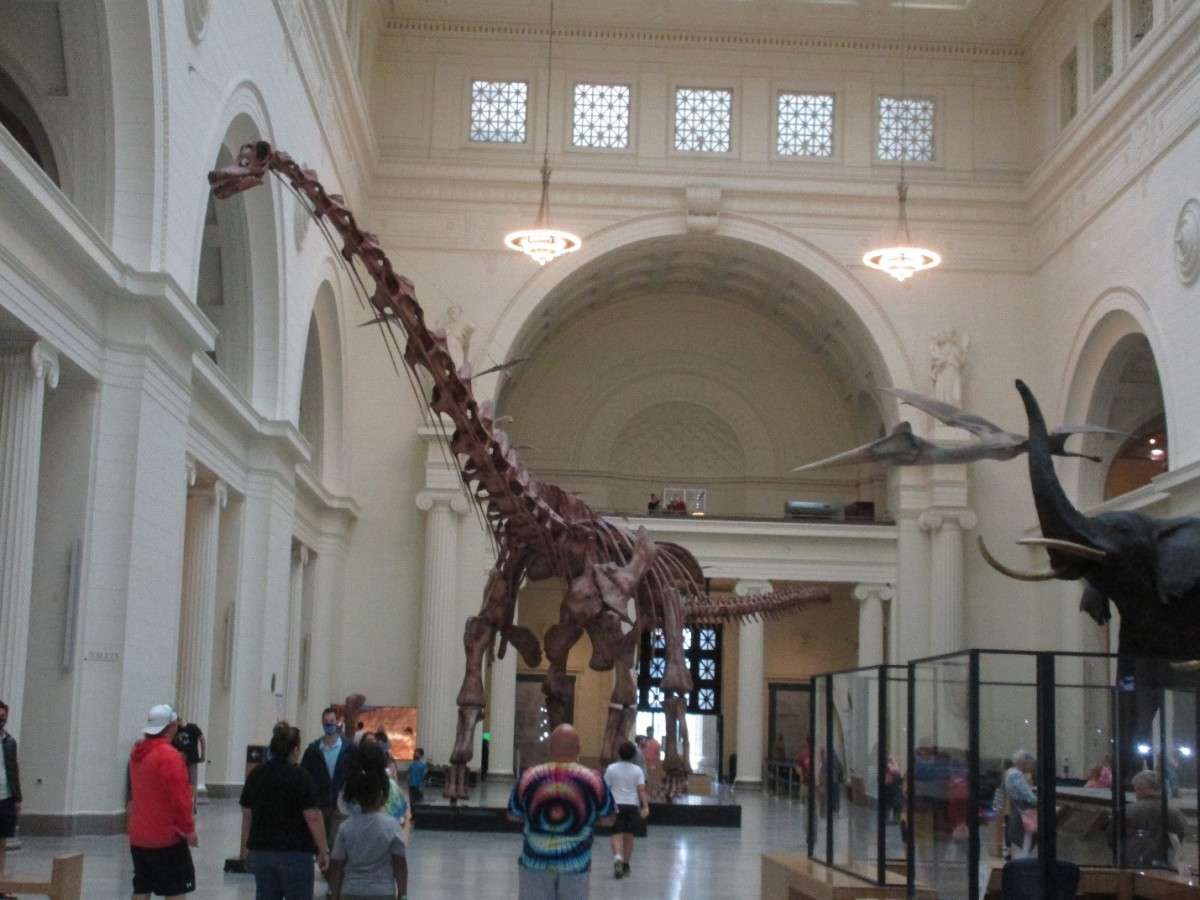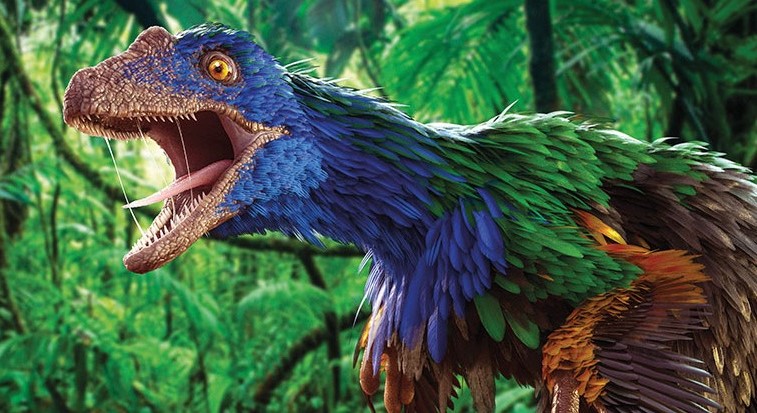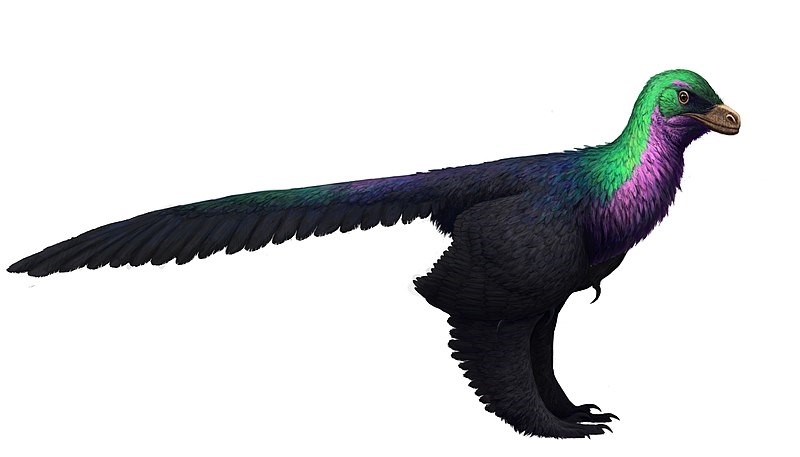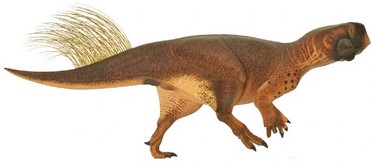The best part of any museum is the dinosaurs– especially the huge skeletons! But they didn’t just walk into the museum on their own. And those bones weren’t always clean and perfectly shaped.
In fact, the bones fossil hunters dig up are usually damaged in some way. They might have been chewed on by predators or scattered about by wind or water. They can be cracked, split, or smashed. So how do they go from broken to beautiful? This happens in a fossil lab.
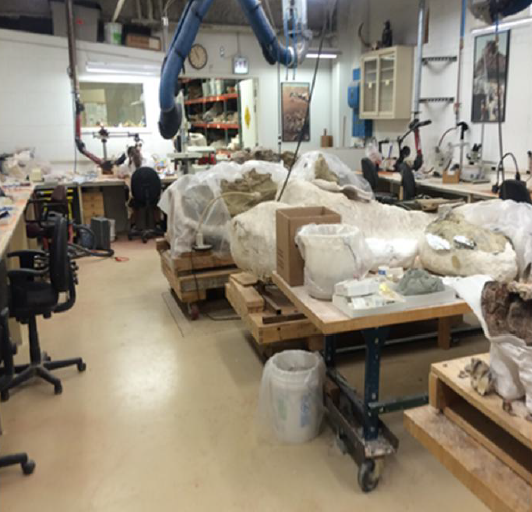
It starts with getting the bones safely back to the fossil lab. When a bone is dug out of the ground, sometimes it comes free easily. But more often the bone is attached to the rock, so fossil hunters need to carve out both. They use jackhammers and rock saws, pickaxes, hammers, and chisels.
Scientists call the rock next to the bone the matrix. Fossil hunters leave the matrix around the bone, so it can protect the bone. They cover the bone and its matrix with plaster to provide more protection. The whole thing can weigh several hundred pounds.
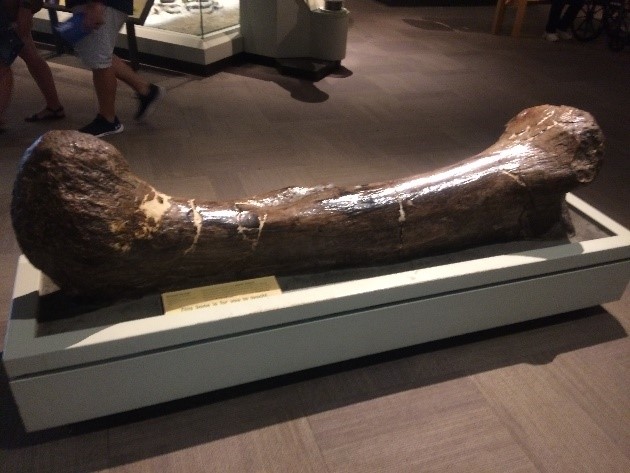
Small bones are packaged in crates while big bones may be lifted out by helicopter. They are all sent to a fossil lab. Unloading the bones must be done carefully. The big bones don’t always fit through the door. They need to come in through a loading dock.
Some bones are stored away. There are always more bones needing preparation than time and people to prepare them. Bones not being worked on are put on shelves or in specimen cabinets.
Other bones are brought into the prep lab to have the matrix removed from the bone. The workroom needs to have bright lights, so preparers can see what is rock and what is bone. It also needs good air flow because removing the matrix produces a lot of dust. Stations are set up around the room.
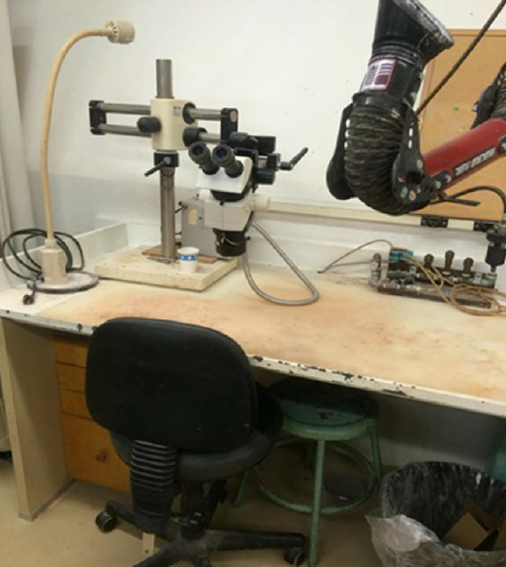
A work station needs to have a large, flat surface to place the fossil on. There should be storage space for the tools the preparer will need and its own light source. It may also have a microscope to study small fossils and an air tube to vacuum up the dust and tiny bits of rock. The preparer should wear protective goggles, a dust mask, and gloves. Preparers using noisy tools, such as a jackhammer, also need ear plugs.
When a bone is selected for preparation, first the preparers need to remove the plaster jacket. They use a cast-cutting saw, like the ones doctors use to remove a cast from a broken limb. A preparer might then use a small jackhammer called an air scribe to remove the matrix that is not too close to the bone.

When preparers get close to the bone, they need to be very careful. The bones break very easily. Using a small metal pick called a pin vise (pictured to the side), preparers scrape away the rock, just like when a dentist scrapes plaque from your teeth. They scrape in a direction away from the bone so that if they slip, they don’t hurt the bone. The key is to go slowly. Sometimes they use a magnifying glass to make sure they are scraping away only the matrix.
Bits of matrix are blown away with an air tube as they come off. Brushes can also be used to keep the surface clean, and a very sharp needle might be used to remove matrix in small cracks. Exposed bone is covered with glue to keep it from breaking apart.
Sometimes preparers use chemicals, such as acid, to dissolve the matrix, but they must be careful to make sure the chemicals don’t hurt the bone. It can take anywhere from a few minutes to hundreds of hours to remove all the matrix. Sometimes part of the matrix is left to hold delicate bones together.
Once the matrix is removed, there is still work to be done. Often the bone is broken, so the pieces must be put together. That can be like putting a jigsaw puzzle together. Very small bones can be kept together with wax. Others need glue, and others need wire or steel bands.
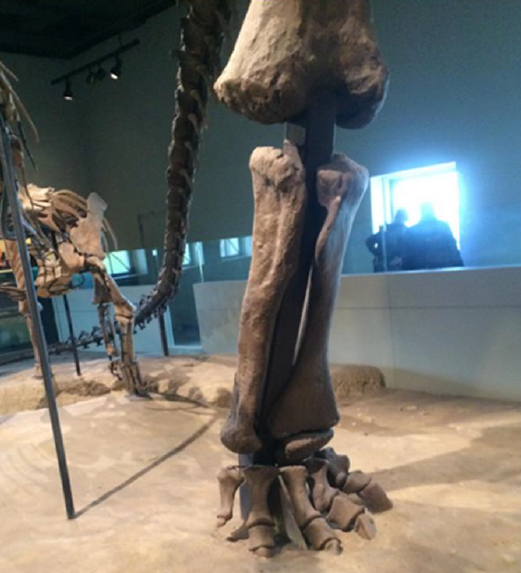
Putting together all the bones of a skeleton takes lots of patience. Preparers make sketches and 3-D models. Bones need to be placed next to each other in the same way they were when the dinosaur was alive. A natural-looking pose must be chosen.
It is rare that fossil hunters find all the bones for one dinosaur. Preparers need to figure out which bones are missing. To complete the skeleton, preparers may use bones from several dinosaurs of the same species. Sometimes they can figure out what a bone should look like by the bones around it. Then preparers can sculpt a bone from plaster or plastics.
Many of the prepared bones are stored in cabinets or lockers. They each have a number that tells when and where the fossil was found. Scientists can find the fossil they need and study it.

Sometimes the scientists make a cast of a bone. First, they make a rubber mold from the real bone. Then they put plaster or resin into the mold. When it dries, it’s a perfect copy. Museums often display casts rather than the real bones. This prevents damage to the real bones and makes it easier for scientists to study the real bones. Casts are also used to make model dinosaurs. Artists create realistic-looking dinosaurs for the movies or special exhibits. However, technology is already making this process easier and faster by using 3-D printing. In the future plaster casts will be a thing of the past.
To prepare a skeleton for an exhibit, it’s important for preparers to make sure every bone is stable. Fossils are very heavy, so the framework holding them up needs to be able to hold the weight without hurting the fragile fossils.
The bones are held together with such things as glue, metal pegs, bolts, wire, and thick cables. The preparers try to keep these out of sight because they want the dinosaur to look as natural as possible.
It can take several years to mount a big dinosaur. But when it’s all done, thousands and thousands of people will gaze up at the dinosaur skeleton and catch their breath with awe.
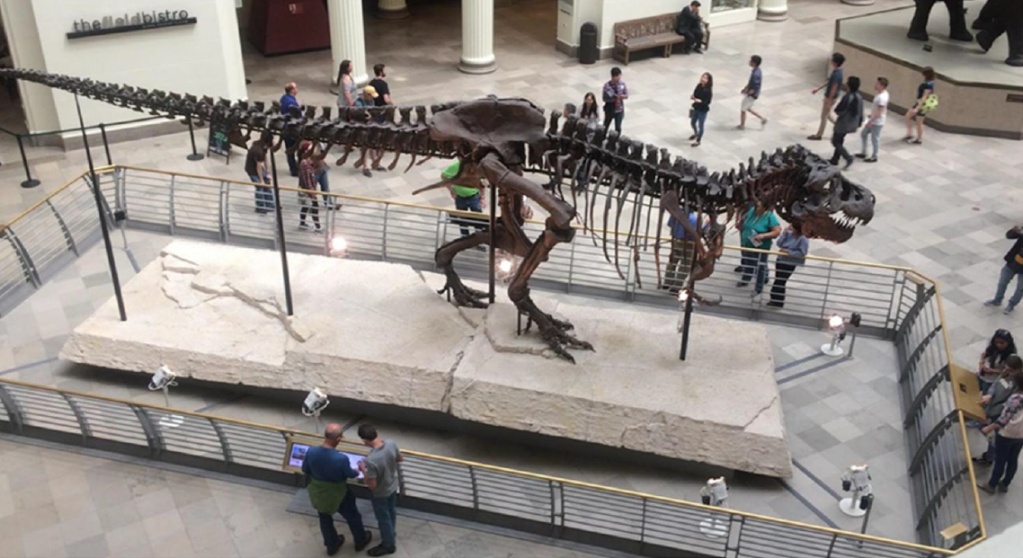
Would you like to work in a fossil lab? Please tell me why or why not in the comments section.
I took all the photos
